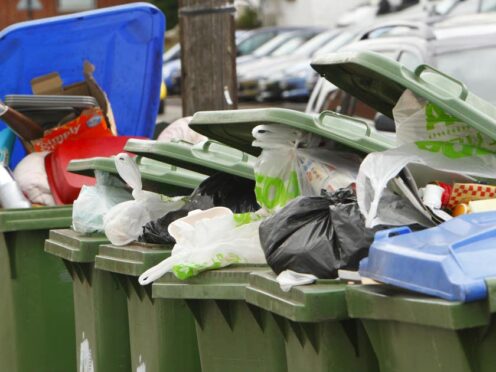More councils could suffer severe financial distress without an injection of funding by the next government if demand and costs do not abate “significantly and quickly”, research suggests.
In a warning about the viability of councils in England, the Institute for Fiscal Studies (IFS) said it is “remarkable” that the main parties have been “silent” on the issue and warned the scope for further cuts to services was severely limited for some authorities after more than a decade of financial challenges.
The IFS also said councils in more deprived areas, which rely more on government grants relative to council tax revenue, could be hit hardest without a significant redistribution of funding in their favour.
The analysis found that if demand for services such as social care continues to increase alongside above-inflation cost pressures, councils may be forced to make further cuts to services.
This would still be the case if the next government froze rather than cut local authority grants, with the latter approach expected under current spending plans for “unprotected” areas of spending, and council tax increased by 5% every year, the analysis found.
This council tax rise would be 3% above inflation, representing the fastest rise in real terms since the parliament which ended in 2005.
The IFS said: “A combination of statutory duties to vulnerable residents and big cuts to more discretionary services during the 2010s means some councils, at least, would struggle to cut back services further – putting them at risk of severe financial distress.”
The report found the current spending plans of both Labour and the Conservatives suggest unprotected services may be cut by between 1.9% and 3.5% a year up to 2028/29.
However, manifestos have given no indication of whether the next government would prioritise council funding, as has happened since 2019, or cut grants to the levels seen in the 2010s, it added.
Council tax overall generates 57% of councils’ funding compared with 15% provided by government grants.
The analysis found that an increase in council tax in every year of the next parliament of 5%, which has been the recent level permitted with a local referendum, would mean the average cost for a Band D property would be £600 higher in 2029 than it is now.

Considering a scenario where grant funding was cut by 2.7%, which is the mid-point of the expected range for unprotected services, and council tax rose by 5% a year, council funding would annually increase by 2.1% on average in real terms.
In a “relatively optimistic” scenario where grant funding was frozen in real terms, council funding would increase by 2.5% a year on average, but this is lower than the average increase in overall funding of 2.9% a year between 2019 and 2024, the report said.
Meanwhile, the Local Government Association (LGA) has said real-term funding increases of 4.5% a year are needed to maintain services at their current level if demand and cost pressures rise at the same rate as in recent years.
This suggests demand and costs would need to almost halve for the change in funding to keep pace with these stresses, even if there were no real-terms cuts to government grants and council tax increased by 5% every year, the analysis concluded.
“It is likely that recent high growth in demand and cost pressures will eventually slow down, but when and by how much is far from certain,” the report added.
The more council tax-reliant councils in the most deprived areas would be particularly vulnerable to financial distress, the analysis found.
A 2.7% cut in grant funding and a 5% increase in council tax would result in a 1.3% increase in funding for authorities in the 10 most deprived areas, compared with a 3% uplift in the least deprived.
The report said therefore a “significant redistribution” of grant funding would be needed to avoid this disparity, but warned such a move may be difficult to implement, “especially if overall grant funding is constrained”.
Kate Ogden, senior research economist at the IFS and an author of the report, said: “Many councils are under clear financial strain. They are struggling to meet the surging demand and cost for services such as children’s and adults’ social care residential placements, special educational needs support and temporary accommodation for the homeless.
“Unless these pressures slow down significantly and quickly, or the next government gives a big injection of funding to local government, councils will likely need to make cutbacks to some areas of provision.
“Given that more discretionary services have often seen cuts of 40% or more since 2010, councils may struggle to do this. More could be pushed to the financial brink… It is remarkable that the main parties have been silent on how they would address these challenges.”
Responding to the report, Kevin Bentley, senior vice chairman at the LGA and Conservative leader of Essex County Council, said: “A funding gap of more than £6 billion facing local services over the next two years – fuelled by rising cost and demand pressures – means a chasm will continue to grow between what people and their communities need and want from their councils and what councils can deliver.
“The LGA is calling on all political parties to commit to a significant and sustained increase in funding for councils in the next Spending Review, alongside multi-year funding settlements and plans to reform the local government finance system.”
Labour and the Conservatives have been approached for comment.
